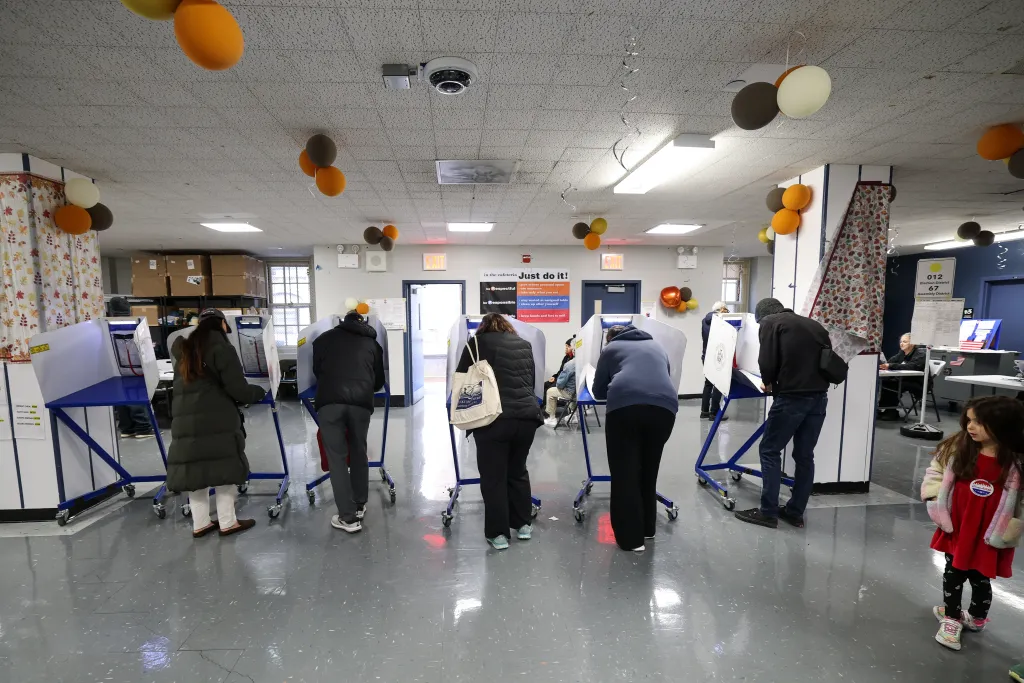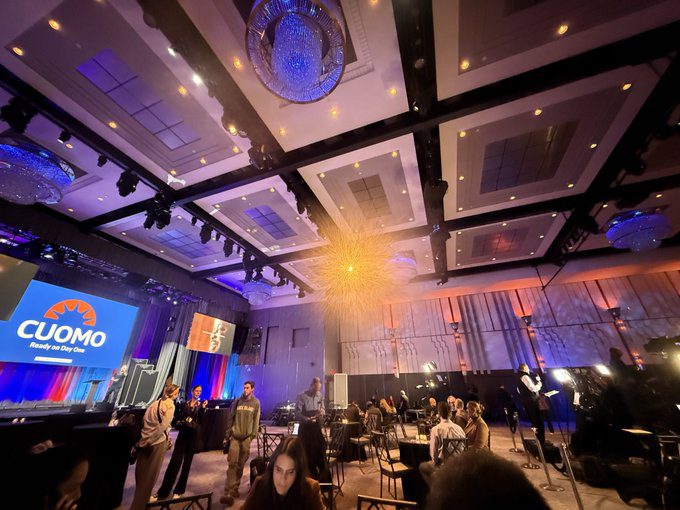Andrew Cuomo and Zohran Mamdani Locked in Tight Race with 100,000-Vote Gap as New York City’s Democratic Primary Unfolds
In one of the most heated and closely watched political battles in recent New York City history, Andrew Cuomo and Zohran Mamdani are separated by just under 100,000 votes with roughly one-third of ballots counted. The former governor, attempting a political comeback four years after his resignation, now finds himself trailing a 33-year-old democratic socialist assemblyman whose grassroots campaign has unexpectedly captured the city’s progressive imagination.

According to early results released Tuesday night, Mamdani leads with 51.5 percent of the vote — approximately 422,716 ballots — while Cuomo stands at 39.6 percent, with 325,497 votes. Election officials say about 830,000 votes have been tallied so far, representing roughly a third of total ballots cast. The numbers place Mamdani ahead by nearly 100,000 votes, a gap that could grow or narrow significantly as absentee and ranked-choice ballots are processed later this week.
The primary, already one of the most talked-about races of 2025, has drawn national attention for both its symbolism and stakes. Cuomo, once one of the most powerful Democratic figures in America, has sought to rehabilitate his image following his 2021 resignation amid allegations of misconduct. His campaign focused on experience, managerial stability, and promises to restore “grown-up leadership” to City Hall. Mamdani, by contrast, has framed his bid as a generational and ideological challenge — one rooted in housing justice, public transit reform, and an unapologetically left-wing vision for the city’s future.
The contrast could hardly be starker. Cuomo, 67, represents the establishment, a legacy of three terms as governor marked by both accomplishments and controversy. Mamdani, 33, a state assemblyman from Queens, represents the new wave of democratic socialism reshaping local politics. His grassroots organizing style, bolstered by younger voters and progressive movements, has mirrored the energy once seen in the campaigns of Alexandria Ocasio-Cortez and Bernie Sanders.
Early turnout data indicates a clear generational divide. Voters under 40 overwhelmingly supported Mamdani, while Cuomo’s base remained strongest among older, moderate Democrats in Manhattan and Staten Island. Brooklyn, Queens, and the Bronx showed far more enthusiasm for Mamdani, who has long emphasized issues like rent stabilization, free city buses, and a “Homes for All” policy platform.

For Cuomo, the stakes could not be higher. Once seen as untouchable in New York politics, his decision to re-enter the political arena after years of public scrutiny was viewed as a gamble. His campaign’s early momentum, driven by name recognition and a series of high-profile endorsements, faded as progressive enthusiasm coalesced around Mamdani’s movement. By mid-October, polling showed the race tightening dramatically, setting up a showdown between two visions of the Democratic Party’s future.
The New York primary’s ranked-choice voting system adds yet another layer of suspense. While Mamdani holds a first-round lead, other lower-polling candidates’ second-choice preferences could still play a role in determining the final outcome. However, early projections from multiple political analysts suggest that Mamdani’s margin is large enough that a reversal appears unlikely unless absentee ballots break overwhelmingly for Cuomo.
The symbolic weight of the race is not lost on observers. Cuomo’s comeback bid was widely seen as a referendum on his legacy — and on whether voters were ready to forgive and forget his turbulent exit from the governor’s mansion. For Mamdani, the election has been a proving ground for the city’s progressive movement, demonstrating its capacity to turn protest energy into real electoral power.

Political insiders describe the contest as an ideological battle with national implications. A Mamdani victory would represent a clear shift toward the left within New York’s Democratic base, sending a message to moderates that the next generation of voters is prioritizing housing affordability, transit equity, and climate resilience over traditional political hierarchies. For Cuomo, even a strong second-place finish could mark a partial redemption, positioning him as a political survivor in a city that has historically embraced comebacks.
Throughout the campaign, Mamdani leaned heavily on small-dollar donations and community events, often holding rallies in public parks and housing complexes rather than luxury venues. His slogan, “New York for Everyone,” resonated deeply with working-class voters. Cuomo, meanwhile, held more traditional campaign stops and leaned on his network of long-time donors, emphasizing his experience managing crises like COVID-19 and his infrastructure achievements during his governorship.
When the first batch of results dropped Tuesday evening, Mamdani supporters erupted in cheers at his campaign headquarters in Astoria. Volunteers who had canvassed for weeks celebrated the early lead as proof that their people-powered campaign could overcome the influence of establishment money. “This is a movement, not just an election,” one campaign worker told reporters. “We’re showing that New York belongs to its people again.”

At Cuomo’s camp, the mood was far more subdued. Campaign aides remained optimistic, citing uncounted absentee ballots from key districts, but privately acknowledged the steep climb ahead. “We’ve seen big swings before,” one senior aide said, “and this race isn’t over until every last vote is in.”
Political observers say that no matter the final outcome, the race represents a crossroads for New York Democrats. The emergence of Mamdani — an immigrant, organizer, and first-time mayoral contender — signals a new era in which grassroots politics and digital mobilization can rival the traditional party machinery. Meanwhile, Cuomo’s reemergence highlights the enduring resilience of political veterans seeking redemption in a volatile political landscape.
Experts believe this election could redefine what it means to be a Democrat in New York City. The competing narratives — experience versus reform, establishment versus movement — will likely shape policy debates for years to come. If Mamdani’s lead holds, his victory would mark a dramatic reshaping of the city’s political order, much like the insurgent victories that transformed Queens and the Bronx earlier in the decade.
As vote counting continues, both campaigns have urged patience and transparency. City officials estimate that full results could take several more days, as mail-in ballots and ranked-choice tabulations are finalized. Meanwhile, public interest remains high, with live updates and political analysis dominating cable news and social media discussions.
By the time the dust settles, one fact will be undeniable: this race has already rewritten the narrative of New York’s Democratic politics. Whether Andrew Cuomo manages to close the gap or Zohran Mamdani cements a historic victory, the contest has revealed a party in transformation — torn between its past and its future, between the politics of power and the politics of purpose.
The margin may still shift, but the message is already clear: New York City voters are demanding something new, and no matter who emerges victorious, the city’s political establishment will never look quite the same again.


